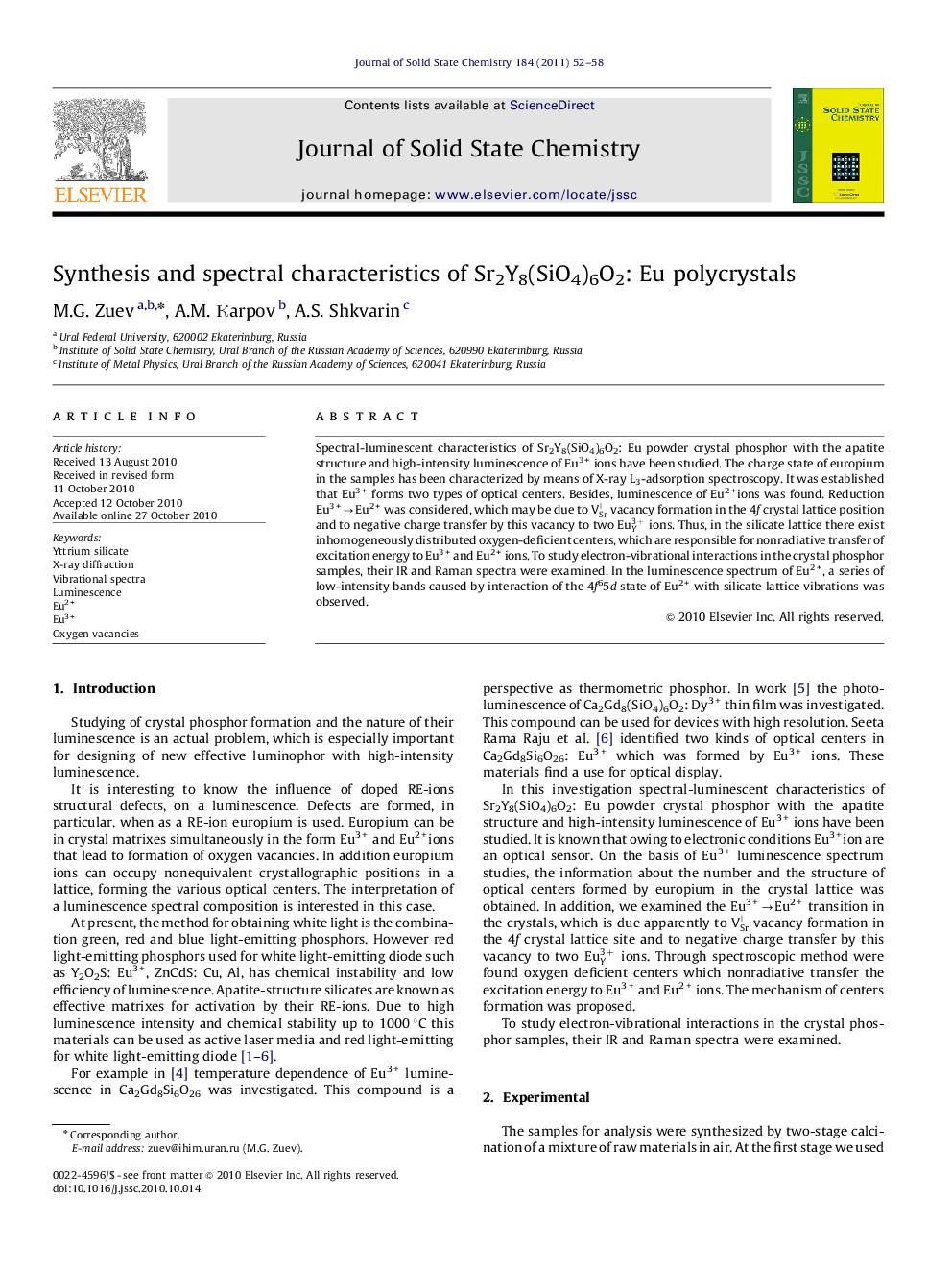| Article ID | Journal | Published Year | Pages | File Type |
|---|---|---|---|---|
| 1332211 | Journal of Solid State Chemistry | 2011 | 7 Pages |
Spectral-luminescent characteristics of Sr2Y8(SiO4)6O2: Eu powder crystal phosphor with the apatite structure and high-intensity luminescence of Eu3+ ions have been studied. The charge state of europium in the samples has been characterized by means of X-ray L3-adsorption spectroscopy. It was established that Eu3+ forms two types of optical centers. Besides, luminescence of Eu2+ions was found. Reduction Eu3+→Eu2+ was considered, which may be due to VSr∥ vacancy formation in the 4f crystal lattice position and to negative charge transfer by this vacancy to two EuY3+ ions. Thus, in the silicate lattice there exist inhomogeneously distributed oxygen-deficient centers, which are responsible for nonradiative transfer of excitation energy to Eu3+ and Eu2+ ions. To study electron-vibrational interactions in the crystal phosphor samples, their IR and Raman spectra were examined. In the luminescence spectrum of Eu2+, a series of low-intensity bands caused by interaction of the 4f65d state of Eu2+ with silicate lattice vibrations was observed.
Graphical abstractThe scheme of nonradiative transfer over of energy of excitation from oxygen vacancies to ions Eu2+ and Eu3+ in Sr2Y8(SiO4)6O2: Eu phosphors.Figure optionsDownload full-size imageDownload as PowerPoint slideResearch Highlights►In Sr2Y8(SiO4)6O2:Eu phosphors optical centers Eu2+ and Eu3+ (two types) are formed. ►The 4f65d state of Eu2+ interacts with the lattice vibrations of Sr2Y8(SiO4)6O2:Eu. ►In crystal lattice Sr2Y8 (SiO4)6O2:Eu oxygen vacancies are formed. ►Oxygen vacancies nonradiatively transfer the energy of excitation to Eu2+ and Eu3+ ions. ►Oxygen vacancies are non-uniformly distributed in a phosphorus lattice.
